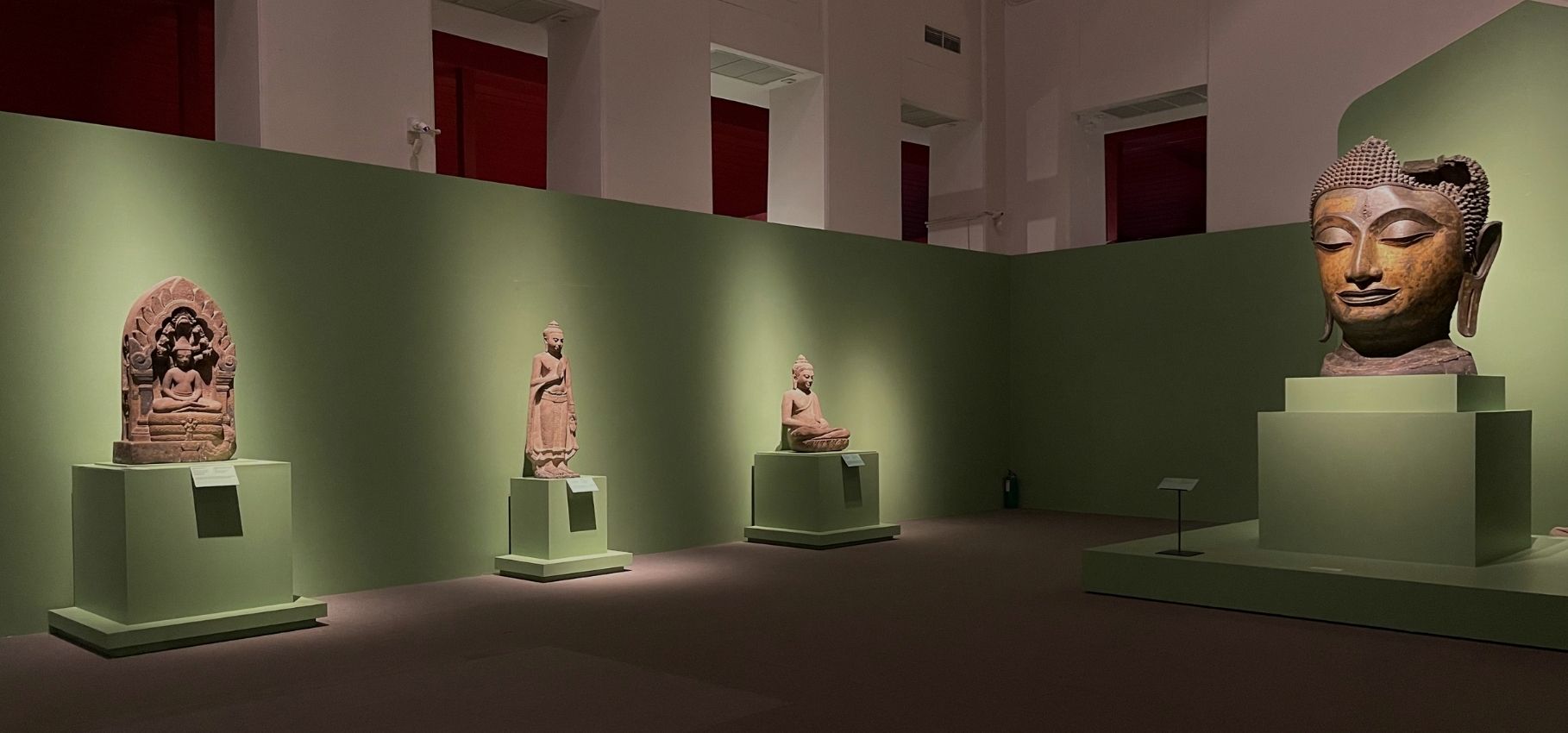For the first time, 81 Buddhas sculpted over a 1,300-year period are on display at the Bangkok National Museum in a magnificent show that combines beauty and religion.
The exhibition, which runs until September 10, highlights the exquisite carving of 81 Buddha figures as well as early kingdoms including as Sukhothai, Lanna, Ayutthaya, and Rattanakosin. These kingdoms developed the images to add to Buddhism, each with their unique spiritual practises, sculptural traditions, and royal patronage.
All of the Buddhist sculptures in the show are masterpieces and national treasures gathered from Thailand’s national institutions. And the stories of Thai Buddhist sculpture will transport visitors back to the sixth century, when Indian Buddhist art was at its peak.
The Buddha sculptures, like Buddhism itself, arrived in what is now Thailand via old trade channels. Indian merchants and Buddhist monks risked the rough seas to reach Suvarnabhumi (“Land of Gold”), where they aided the local economy and philosophy by connecting them to the rest of the world.
The Standing Buddha Statue in Teaching Posture is Thailand’s oldest Buddha sculpture. The bronze sculpture, which measures about 30 centimetres and was carved in Lanka’s Anuradhapura style (1,400 – 1,500 years ago), depicts the Buddha with his right hand in the teaching posture and his left hand clasping the end of the robe, evoking the influence of India’s Amaravati style (2nd to 4th century).
The statue was presented to Prince Damrong Rajanubhap, King Chulalongkorn’s half-brother and a noted historian. However, similar bronze Buddha figures have been uncovered throughout Southeast Asia.
These Buddhist statues were most likely transported to the region by sailors, merchants, or Indian priests in order to protect themselves and prevent danger while reaching out to the enigmatic Suvarnabhumi.
The earliest Buddha sculpture produced in Thailand is also on display. A standing Buddha produced between the sixth and ninth centuries, it resembles the Buddha sculptures brought to earlier by merchants and Buddhist monks from elsewhere.
The left hand is clasping the robe’s hem, while the right hand is in the Dispelling Fear Posture, not the Teaching Posture. The standing Buddha is influenced by Gupta art, with a round face, big curls and a diaphanous robe.
The Earliest Buddhist Sculpture Gallery contains these and many more. Many seated Buddhas are seen just beyond them, carved in the styles of many schools of art: Sukhothai, Lop Buri, Lanna, Ayutthaya, and Rattanakosin.
The Sukhothai Buddha is probably difficult to distinguish from the Lanna and other Buddhas to the untrained eye. Allow an art historian and an archaeologist to handle the intricate intricacies, and let beauty and style guide you through the show.
Sukhothai art with its tranquil smile and low glance, Lop Buri statues with their thick lips and stern countenance, and Ayutthaya and Rattakosin Buddhas with their elaborate robes and crowns are all beautiful.
When you revisit the show, as you may find yourself doing, pay great attention to details and learn how the sculptures from different kingdoms relate to one another.
Thailand’s Emerald Buddhas
One of the most famous Buddha statues in Thailand is the Emerald Buddha, also known as Phra Kaew Morakot or Wat Phra Kaew. It is located in the Temple of the Emerald Buddha (Wat Phra Kaew) within the grounds of the Grand Palace in Bangkok.
The Emerald Buddha is a highly revered statue of the Buddha in a seated meditative position, made of green jadeite rather than emerald. It is considered the palladium (protective image) of the Kingdom of Thailand. The statue measures about 66 centimeters (26 inches) tall and is believed to have been carved in the 14th century.
The Emerald Buddha has a rich history and is associated with various legends and stories. It was said to have originated in India, traveled through various kingdoms in Southeast Asia, and eventually found its permanent home in Thailand in the 15th century. The statue is regarded as a symbol of Thai national identity and is deeply venerated by the Thai people.
While the Emerald Buddha is the most famous Buddha statue in Thailand, it is worth noting that there are numerous other revered Buddha images and statues throughout the country. Each region and temple often have their own significant and highly venerated Buddha statues that hold great importance to the local communities.
The Emerald Buddha is highly revered in Thai Buddhism and serves as a symbol of national identity and spiritual significance. It is believed that the statue brings prosperity and good fortune to the country. The statue is also an important symbol for the Thai monarchy, and its garments are changed three times a year by the King of Thailand during elaborate ceremonies.
While the Emerald Buddha is not located in Chiang Rai, the city does have its own notable attractions. Chiang Rai is known for its unique temples, such as the White Temple (Wat Rong Khun) and the Blue Temple (Wat Rong Suea Ten), which showcase stunning architectural designs and intricate artwork. The city is also a gateway to the Golden Triangle region, an area where Thailand, Laos, and Myanmar converge, and is known for its scenic landscapes and cultural diversity.
⚠ Article Disclaimer
The above article is sponsored content any opinions expressed in this article are those of the author and not necessarily reflect the views of CTN News





